

The momentum in hiking footwear is moving away from bulky boots toward lightweight shoes and even trail runners that are faster and more comfortable. You do lose some ankle support when carrying a heavy pack or traversing rocky trails, but the weight savings and feathery feel are worth it for many. Our team of avid hikers and backpackers donned countless pairs of shoes to narrow in on the streamlined selection of 15 models you see below, from ultralight options for fast-and-light trips to more supportive models for carrying a full pack. For more background information, see our comparison table and buying advice below the picks, as well as our breakdown on how we approach the testing process. Finally, while this article includes both men's and women's styles, we've also put together a dedicated list of the best women's hiking shoes.
Editor's note: We updated this guide on October 11, 2024, to swap Keen's Targhee Low Vent to the latest IV Vent, expand some of the sections in our buying advice, and add in fresh photos from a recent testing trip in Wyoming.
 Category: Hiking shoe
Category: Hiking shoe
Weight: 1 lb. 11.5 oz.
Waterproof: Yes (Gore-Tex)
What we like: Great balance of weight and on-trail performance.
What we don’t: Love-it-or-hate-it fit and comfort.
Salomon’s X Ultra has been one of our favorite hiking shoes for years, offering an exceptional combination of comfort, on-trail performance, and durability for everything from casual day hikes to ambitious overnight missions. A few seasons back, they released an update to the much-loved shoe in the X Ultra 4 here. Beyond its sleeker and more modern look, the X Ultra 4 features a revised lacing system and chassis, along with a roomier fit in the toe box. Importantly, the shoe retains the outgoing version’s fantastic mix of agility, support, durability, and protection, and there’s enough cushioning underfoot for full days with a loaded pack. Finally, at 1 pound 9 ounces for our men’s size 9, it’s competitively lightweight and nimble.
While the latest X Ultra 4 takes our top spot, it wasn’t a near-universal choice as in years past. In short, some of our editors weren’t huge fans of the 4’s fit, which features a narrow midfoot, spacious forefoot, and hard-to-customize quick-pull lacing system. For some, this offers a locked-down feel but perhaps too roomy of a toe box; for others, it’s ideal in the forefoot but too tight at the arch. What’s more, the raised collar around the front of the ankle can be a source of rubbing and discomfort for some users (in this case, it wasn’t a problem for our testers). All that said, if you can try it on before you purchase (and it fits), the latest X Ultra is undeniably a high-performance, quality option.
Read more: men's Salomon X Ultra 4 GTX review
See the Men's Salomon X Ultra 4 GTX See the Women's Salomon X Ultra 4 GTX
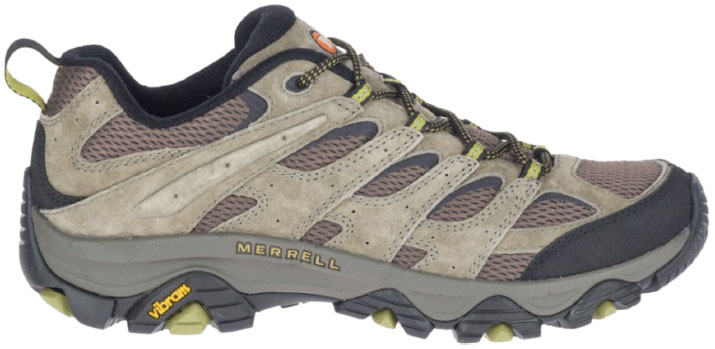 Category: Hiking shoe
Category: Hiking shoe
Weight: 2 lb. 1.0 oz.
Waterproof: No (waterproof available)
What we like: Great value for a very comfortable and well-built hiking shoe.
What we don’t: Not built for technical terrain.
These may not be your long-distance or fast-and-light hiking shoes, but there is a lot to like about Merrell’s flagship Moab 3. What has made this shoe so popular over the years? Most notably, it's the lightweight but planted feel, comfortable and well-padded fit, excellent durability, and attractive price point. Merrell updated the Moab over a year ago, including recycled materials, a new insole, and modest updates to cushioning and traction, but the formula remains largely the same. For day hikers sticking to established trails, the Moab 3 is comfy and a great value.
In terms of downsides, on rocky and muddy trails, we’ve found that the Moab’s traction and stability fall short of a performance shoe like Salomon's X Ultra above or the La Sportiva Spire below. And at 2 pounds 1 ounce for a pair, it feels a little slow and cumbersome compared with some lighter and nimbler alternatives (including the X Ultra 4). But these are reasonable trade-offs for casual hikers, and it’s hard to deny the price, which checks in a full $40 less than the top-rated Salomon. Keep in mind that we included the non-waterproof version here, but Merrell also makes a waterproof model with their in-house membrane for $140, along with an upgraded Gore-Tex version for $160.
Read more: men's Merrell Moab 3 review
See the Men's Merrell Moab 3 See the Women's Merrell Moab 3
 Category: Trail runner
Category: Trail runner
Weight: 1 lb. 3.6 oz.
Waterproof: No
What we like: Lightweight feel, grippy outsole, and thick but supportive cushioning.
What we don’t: Not as durable as a dedicated hiking shoe; we liked prior versions better.
Hoka used to be a niche brand for runners, but that has changed dramatically over the past few years, and the brand is now a go-to option for hikers. This trajectory makes sense: More and more people are ditching their burly boots for hiking shoes and trail runners—if you stay mostly on established trails and aren’t scrambling or carrying a heavy backpacking pack, a lightweight trail runner can offer the best combination of performance and comfort. And with thick yet supportive cushioning, an impressively grippy sole, and a long track record of success, the Hoka Speedgoat is our favorite shoe in this category.
It's always risky business updating a legendary design like the Speedgoat, and unfortunately, we feel that Hoka fell a bit short with the latest “6.” While the new shoe offers a little more stability and durability than the outgoing model by way of a firmer midsole and a more stretch-resistant upper, it’s notably less plush and springy than prior versions—a big reason that many folks turn to Hoka in the first place—despite boasting more cushioning underfoot. We also wish the tongue were longer to prevent it from bunching underneath the top laces, and breathability is a step down due to the more abrasion-resistant materials (note: The Speedgoat 5 is still widely available, although we don't love the bland colorways). On the bright side, Hoka retained the aggressive Vibram outsole that we love and managed to trim off around an ounce per pair while boosting overall durability. All told, for those who hike or run mostly on established trails, the Speedgoat remains a staff favorite.
See the Men's Hoka Speedgoat 6 See the Women's Hoka Speedgoat 6
 Category: Hiking shoe
Category: Hiking shoe
Weight: 1 lb. 15.0 oz.
Waterproof: Yes (Gore-Tex Surround)
What we like: A backpacking-ready shoe that is tough, comfortable, and well-made.
What we don’t: Super pricey and a bit heavy.
Many of the designs on our list are lightweight or almost trail runner-like in nature, but La Sportiva’s burly Spire is backpacking-ready—or just about as close as a hiking shoe gets. It feels sturdy and substantial with good stiffness and a thick midsole, effectively isolating you from rough and rocky trails (La Sportiva even goes so far as calling it a low-cut hiking boot). Throw in excellent protection and grip over a variety of terrain, plus a quality build that we’ve come to expect from this Italian climbing brand, and you have one of the more capable hiking shoes on the market.
Why isn’t the La Sportiva Spire ranked higher? At nearly 2 pounds, it’s heavy for a low-top hiking shoe and sits relatively high on the ankle. Second, the $209 price tag makes it the most expensive model on this list—and notably pricier than many hiking boots, even. Finally, we appreciate the accommodating fit that should work well for most foot types, but the shoe is a little wide at the heel, and we had to cinch it down tightly to avoid slippage. These issues aside, it’s hard to knock the performance chops or build quality of the La Sportiva, and it offers a nice step up in on-trail performance and durability compared to the TX4 Evo below.
Read more: men's La Sportiva Spire GTX review
See the Men's La Sportiva Spire See the Women's La Sportiva Spire
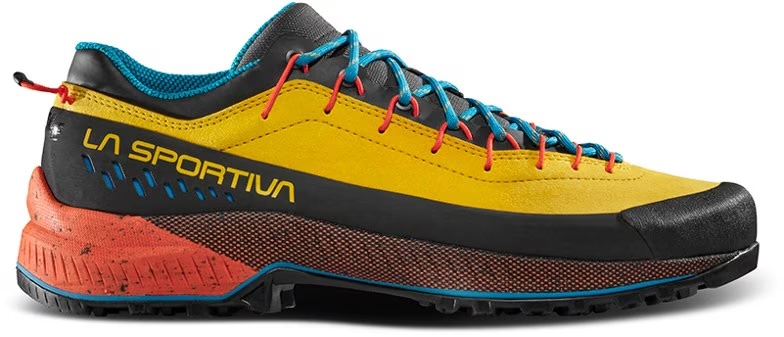 Category: Approach shoe
Category: Approach shoe
Weight: 1 lb. 12.0 oz.
Waterproof: No
What we like: Approach shoe grip with hiking shoe comfort.
What we don’t: Heavier and less malleable than the previous iteration; leather upper limits breathability.
The La Sportiva TX4 Evo—the brand's latest take on their longstanding TX4—certainly isn’t a traditional pick, but boy do we love this shoe. It’s built as an approach shoe, which means that it’s grippy and tough for long hikes to climbing objectives or traveling over steep, rocky terrain. The Vibram outsole, full rubber rand, and smooth area of sticky rubber under the toe make it a great option for scrambling, smearing, and edging on rock. But what we have been impressed with most is its versatility: The TX4 does equally well moving fast on the trail with its light and moderately flexible construction. We even like it for everyday use due to the high levels of comfort and attractive design.
As with most approach shoes, the TX4 Evo does have limitations. The tread grips exceptionally well on wet and dry rock and even impressed us with traction on snow, but it will fall short of a true hiking shoe in dirt and mud. We also found the latest Evo model to be more rigid than the previous version, which was already relatively stiff and inflexible, although overall support and comfort are similar (and the shoe does break in a fair amount over time). But overall, don’t be dissuaded by the approach shoe label: The TX4 Evo is a worthy companion for long days on the trail, and the addition of eco-friendly touches like recycled materials and a resolable platform are certainly noteworthy. Finally, keep in mind that La Sportiva makes this shoe in a number of versions, from the uber-lightweight TX2 Evo up to the hardwearing TX Hike Mid (a full-on hiking boot).
Read more: women's La Sportiva TX4 Evo review (prior version)
See the Men's La Sportiva TX4 Evo See the Women's La Sportiva TX4 Evo
 Category: Trail runner
Category: Trail runner
Weight: 1 lb. 5.4 oz.
Waterproof: No (waterproof available)
What we like: A thru-hiker favorite thanks to its low weight and comfort-first design features.
What we don’t: Roomy fit and flexible design aren’t ideal for difficult terrain; prone to durability issues.
Similar to the Speedgoat above, Altra’s Lone Peak was designed first as a running shoe and has since become a thru-hiker favorite. But while we love the Speedgoat for its agility and cushioning, the Lone Peak is highlighted for a different skill set: The shoe has a roomy toe box, features a zero-drop shape that encourages a natural stride, and offers great ground feel with just 25 millimeters of stack height compared to the Speedgoat’s 40 millimeters (at the heel). It all adds up to a very comfortable shoe that’s especially ideal for long-distance hikers with wide or hard-to-please feet. Altra also tacked on a few trail-worthy features, including a rock plate and gaiter attachments. Finally, the latest “8” improves upon past versions with a moderately more aggressive outsole, a slightly lower weight (by 0.6 oz. per pair), and a new "Ghillie" lacing system with optional pull-through points for a more customizable fit.
We commonly recommend the Lone Peak to hikers who have struck out with other hiking footwear (most often due to issues with blisters and pressure points caused by overly stiff or narrow designs) and have yet to lead anyone astray. In fact, we recently wore the “8” on an 80-mile trek through the Himalaya in Nepal and came away with very happy and pain-free feet. That said, we've had mixed experiences regarding durability: Our tester in Nepal managed to return with intact shoes, while another came away with a torn upper and split midsole after 80 miles in the Utah desert. And the shoe certainly isn't for everyone: Narrow-footed hikers will likely find it too roomy, the zero-drop design can feel particularly squirrely on uneven terrain, and the Altra has a more sluggish, slipper-like feel than the Speedgoat above. But for long-distance hikers who prioritize roominess and comfort above all else (this is especially key once your feet start to swell), the Lone Peak is hard to beat.
Read more: men's Altra Lone Peak 8 review
See the Men's Altra Lone Peak 8 See the Women's Altra Lone Peak 8
 Category: Hiking shoe
Category: Hiking shoe
Weight: 1 lb. 8.0 oz.
Waterproof: No (GTX available)
What we like: Comfortable, grippy, and looks good for use around town.
What we don’t: Pricey and can’t match the X Ultra above in stability.
Danner is best known for their work boots, but the longtime footwear brand has made a nice transition to hikers of late. The Trail 2650—it’s named after the length of the Pacific Crest Trail—has a lot going for it: It’s comfortable right out of the box, grippy with a Vibram outsole, and impressively light at 1 pound 8 ounces per pair. And this shoe manages to do what most hiking shoes don’t: look good in the process. All in all, we’re impressed with the direction that Danner is headed, and the Trail 2650 is one of the more versatile options on this list.
Despite its lightweight build, the Danner offers a step up in protection compared to the trail runners above and below, with generous heel and toe protection and a fairly stiff rubber sole. On the other hand, it’s far from the most stable design here—with a low collar and less of a locked-down feel than shoes like the La Sportiva Spire or Salomon X Ultra 4, it will show its weakness on tricky terrain or while hauling a heavy load. What’s more, we’re not quite sure what to make of the rather massive piece of rubber on the heel, which seems to go above and beyond the necessary levels of protection. But these are small complaints about an otherwise comfortable, capable, and modern lightweight hiking shoe.
Read more: men's Danner Trail 2650 review
See the Men's Danner Trail 2650 See the Women's Danner Trail 2650
 Category: Hiking shoe
Category: Hiking shoe
Weight: 1 lb. 14.6 oz.
Waterproof: Yes (Gore-Tex)
What we like: Cushy design is extremely comfortable; smooth ride.
What we don’t: Some outsole durability issues and polarizing looks; fit runs big.
The Hoka Speedgoat above has achieved legendary status among hikers (specifically the thru-hiking community), but there are some notable trade-offs with the trail running design. For those who want a bit more support and protection, Hoka also offers an impressive lineup of hiking-specific footwear, including the Anacapa 2 Low here. The Anacapa (also available in a mid-height version) features Hoka’s well-known springy midsole, a rockered shape for a smooth ride on the trail, and a beefed-up construction that includes durable nubuck leather and a Gore-Tex waterproof liner. The result is a fast-moving shoe that nicely mixes a trail runner-like feel with the added structure of a hiker.
The Anacapa was updated to the “2” with a focus on more sustainable materials, along with a few noteworthy changes to the midsole and upper. With a less intrusive heel counter, additional tongue padding, and a slightly softer midsole, the 2 is arguably more comfortable than the outgoing version, and Hoka also enhanced the toe box for more durability and protection. However, we were surprised to see that the Vibram Megagrip outsole remains virtually unchanged—like the original, it features large sections of blown rubber that are susceptible to damage from rocky trail use. Additionally, we found it fit slightly larger than the outgoing model (some may need to go down a half size). But the Anacapa 2 nevertheless is a solid update to a very good hiking shoe, and it’s especially ideal for those who stick to established trails and prioritize cushy comfort. For a more breathable design for summer hiking, check out the non-waterproof Anacapa Breeze Low ($155).
Read more: men's Hoka Anacapa 2 Low GTX review
See the Men's Hoka Anacapa 2 Low GTX See the Women's Hoka Anacapa 2 Low GTX
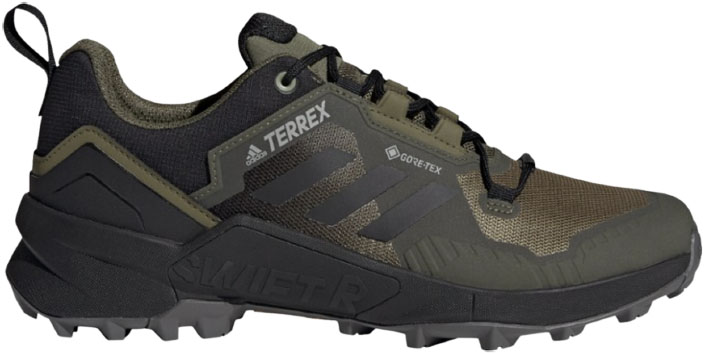 Category: Hiking shoe
Category: Hiking shoe
Weight: 1 lb. 11.9 oz.
Waterproof: Yes (Gore-Tex)
What we like: Hiking boot-like protection, stability, and toughness in a streamlined build.
What we don’t: Stiff and less comfortable for moving fast.
With a light but sturdy and supportive build, Adidas’ Terrex Swift R has consistently been a trail favorite. The third generation brought a more traditional lacing system—which we consider a positive as the quick-lace design on the R2 was finicky—but otherwise, they stuck to the winning formula. Its outsole grips well on everything from mud to rock, and the moderately stiff construction makes it a nice pairing for more technical terrain and when carrying an overnight or multi-day load. Finally, we appreciate the tough and long-lasting materials used throughout: There’s no open mesh in the upper like you’ll find on less durable trail runners, and protection is great around the toes and sides of the feet. For hikers wanting a boot-like feel in a low-top shoe, the Swift R3 is a worthy option.
Some of the Swift’s closest competitors include the La Sportiva Spire and Salomon X Ultra above. All the designs balance weight, cushioning, and trail performance well, although the Salomon is the lightest and nimblest of the bunch. For those who like a little more structure and stiffness, the Adidas and La Sportiva have their appeals, but the trade-off is a longer break-in period and a somewhat clunky feel when you’re trying to move quickly. We also found the R3 runs a little big, which led to a fair amount of heel slippage on extended climbs (some may need to size down). These complaints push the Swift R3 down our rankings, but if it fits you well, the shoe offers a nice combination of durability, support, and price.
Read more: men's Adidas Terrex Swift R3 GTX review
See the Men's Adidas Terrex Swift R3 GTX See the Women's Terrex Swift R3 GTX
 Category: Trail runner
Category: Trail runner
Weight: 1 lb. 6.2 oz.
Waterproof: No (GTX available)
What we like: A classic thru-hiking shoe that offers more stability than the Speedgoat and Lone Peak above.
What we don’t: Heavier than the Speedgoat and less durable than a traditional hiking shoe.
Now in its 18th generation, the Brooks Cascadia is one of the longest-standing trail runners on the market and particularly popular in the thru-hiking community. Like the Speedgoat and Lone Peak above, this shoe bridges the gap for speed-focused hikers with the support and protection you need for rugged trails alongside a hefty dose of cushioning for long days out. And at only 1 pound 6.2 ounces for the pair, it won’t weigh you down as much as the hiking-specific shoes here. We took the outgoing—but very similar—"17" on a backpacking trip through Washington’s Necklace Valley and were impressed with its balanced design: The Cascadia felt stable and precise while traversing off-camber terrain with a full pack but remained impressively quick and responsive when running the vehicle shuttle at the end of the trek. The latest 18 features a more abrasion-resistant mesh upper and additional recycled content, but otherwise, the design remains largely unchanged (which is a good thing).
How does the Cascadia compare with another darling of the thru-hiking world, the Altra Lone Peak? Both offer a nice array of trail-ready features like aggressive rubber outsoles and attachment points for gaiters, but the Brooks is the more technically capable option with additional cushioning and protection underfoot and better overall stability. In terms of fit, the two feature roomy toe boxes that are great for accommodating swollen toes (the Altra is more spacious), but the Cascadia locks things down more at the midfoot and heel. A final key difference is the Cascadia’s 8-millimeter drop compared to the Lone Peak's zero-drop shape, which lends a more agile and quick overall feel (although the “natural” profile of the Altra is a big reason it has such a loyal following). In the end, we think the Brooks is the better all-rounder for most hikers, although the Altra gets the edge for those with particularly hard-to-please feet. For those looking to save, the outgoing Cascadia 17 is still widely available at the time of publishing and discounted while supplies last.
See the Men's Brooks Cascadia 18 See the Women's Brooks Cascadia 18
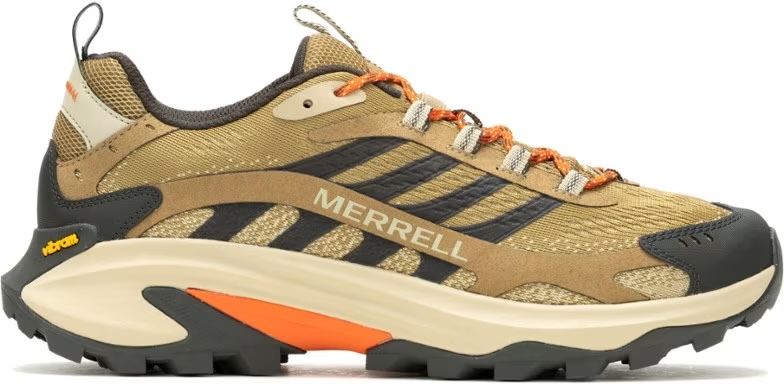 Category: Hiking shoe
Category: Hiking shoe
Weight: 1 lb. 8.0 oz.
Waterproof: No (GTX available)
What we like: Well-rounded on-trail performance in a lightweight build.
What we don’t: A step down in durability and support from a traditional hiker.
Merrell is a longtime leader in hiking footwear, and their updated Moab Speed 2 Low brings the much-loved Moab (above) into the modern era. The Speed 2 Low features a lightweight and cushioned design that will appeal to day hikers and weight-conscious backpackers alike. And despite its trail runner-esque appearance, the Speed 2 still offers a healthy amount of protection and support—including a generous toe and heel cap and firm but comfy midsole—along with a capable Vibram outsole. We also appreciate that Merrell added more foam with the latest model, resulting in a noticeably cushier and less rigid feel. The end result is a hardwearing yet easy-to-wear hiking shoe that toes the line between weight-savings and on-trail performance better than most—and the price is right, too, at just $140.
The Moab Speed 2 Low will get the job done for the majority of day hikers and lightweight backpackers, but keep in mind that it’s far from the most supportive or durable shoe here. If you’re headed out on technical terrain or with a heavy pack, models like the La Sportiva Spire and Salomon X Ultra 4 will offer noticeably more underfoot stability and isolation from the trail. On the other end of the spectrum, the Speed 2 Low feels decidedly firmer and more planted than the even lighter Speedgoat above, although you don’t get the Hoka’s snug and sock-like feel (the Merrell's roomy toe box and lack of secure heel resulted in some sloppiness). But in the end, these shoes strike a healthy balance between comfort and structure, offering enough underfoot support for covering technical ground without feeling overly stiff.
Read more: women's Merrell Moab Speed 2 review (GTX version)
See the Men's Merrell Moab Speed 2 Low See the Women's Merrell Moab Speed 2 Low
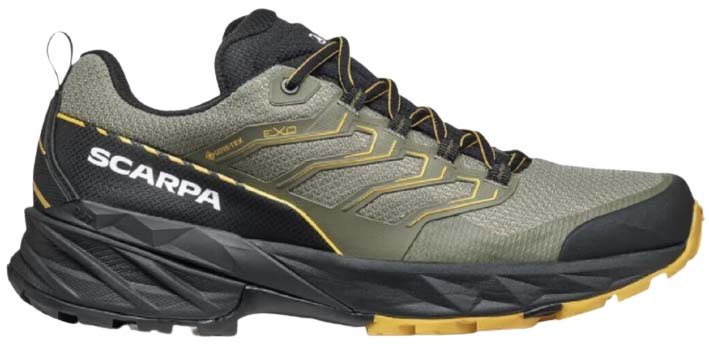 Category: Hiking shoe
Category: Hiking shoe
Weight: 1 lb. 10.8 oz.
Waterproof: Yes (Gore-Tex)
What we like: Trail runner-like agility with a boost in protection and stability.
What we don’t: Expensive; not as light as trail runners like the Speedgoat and Lone Peak above.
The hiking-shoe-meets-trail-runner love story has been unfolding for a number of years, and Scarpa’s Rush 2 GTX is a prime example. With the cushion and rocker of a trail runner alongside the stability and protection of a hiking shoe, the Rush is a best-of-both-worlds option for modern hikers. Specifically, you get a durable fabric upper with welded reinforcements, burly midsole with EVA foam and TPU reinforcements for cushion and stability, and a sticky, rockered outsole that facilitates quick movements. All told, if you’re considering a trail runner but are wary of giving up the support and hardwearing nature of a hiking shoe, the Rush 2 GTX (also offered in a mid-height version) is well worth a look.
We wore the first-generation Scarpa Rush while trekking in southern Patagonia and were impressed with its prowess on everything from hardpacked trail to talus and smooth rock. Our main gripe was the shoe’s low collar and poor ankle lock; thankfully, the 2 offers a noteworthy improvement with increased stability and torsion control at the rear. And while the Rush is heavier than trail runners like the Speedgoat and Lone Peak above (read: not ideal for running), it does feel lighter than its weight would suggest (and in a side-by-side test, the first-gen version was notably more cushioned than the top-ranked X Ultra 4). Finally, the Scarpa is pricey at $199. But for speed-focused hikers and fastpackers, it’s hard to knock the purpose-built design, which offers a nice boost in stability and protection compared to standard trail running shoes.
See the Men's Scarpa Rush 2 GTX See the Women's Scarpa Rush 2 GTX
 Category: Hiking shoe
Category: Hiking shoe
Weight: 1 lb. 10.2 oz.
Waterproof: No (GTX available)
What we like: Grippy and tough at a fantastic price.
What we don’t: Limited toe protection and cheap insole.
We didn’t anticipate two Adidas Terrex shoes making our list, but the AX4 impressed as a well-rounded budget offering. At just $100 for the non-waterproof version—$20 less than the Moab above—you get excellent traction from the Continental-brand outsole, a durable upper, and a simple but effective lacing system. On lengthy and challenging hikes in southern Patagonia, we found the shoe surprisingly adept: Its light weight and low-profile midsole make it easy to trust when scrambling, and there’s sufficient cushioning to isolate you from rocks and roots. As a day hiking option, the Terrex AX4 has a lot going for it.
Unsurprisingly, there are a few compromises in the AX4’s affordable build. First and foremost is the lack of a proper toe cap, which we got a few painful reminders of when catching rocks on the trail. Additionally, the insole is cheap, thin, and seems to hold stink more than a higher-end OrthoLite design. Finally, while comfort is quite good considering the price, spending up for a shoe like the Merrell Moab Speed above will get you a softer interior and springier cushioning. In the end, high-mileage users may want to steer clear, but the AX4’s combination of price and performance earns it a spot for this year.
Read more: men's Adidas Terrex AX4 review
See the Men's Adidas Terrex AX4 See the Women's Adidas Terrex AX4
 Category: Hiking shoe
Category: Hiking shoe
Weight: 2 lb. 2.2 oz.
Waterproof: No (waterproof available)
What we like: Cushioned and comfortable; above-average build quality.
What we don’t: Pricier than the Merrell Moab, subpar traction on wet surfaces, and the heaviest option on our list.
Like Merrell's Moab, the Targhee is Keen's signature everyday hiker. Recently updated, the changes weren't groundbreaking but did a nice job improving overall durability while retaining a lot of what we loved about past versions. This includes a generous but not sloppy toe box, solid all-day comfort, and a fairly responsive feel (for a burly leather hiker, that is). The Targhee IV still won’t be confused with an aggressive model like the Salomon X Ultra 4 above—in looks or performance—but its tough leather construction and well-cushioned interior make it a great casual hiking shoe.
Among day hiking options, the Keen Targhee and Merrell Moab 3 above are two of the most popular on the market. Both are very comfortable right out of the box, offer sufficient support for non-technical trails, and can even do the trick on shorter backpacking trips. In parsing out the differences, the Targhee IV's outsole is a step down in all-around traction, especially on slick terrain like wet rocks. On the flip side, the Targhee's nubuck leather upper is a little more durable than the Moab’s mesh-heavy build, but the Keen isn’t as good of a value at $150 (the waterproof version is $160). The price difference and slippery outsole are enough to push it slightly down our list, but the Targhee’s standout comfort and toughness make it a consistent favorite. And a final note: Our female tester wished she had gone down half a size in the latest Targhee IV, and other reviews that confirm sizing runs on the bigger end.
See the Men's Keen Targhee IV Vent See the Women's Keen Targhee IV Vent
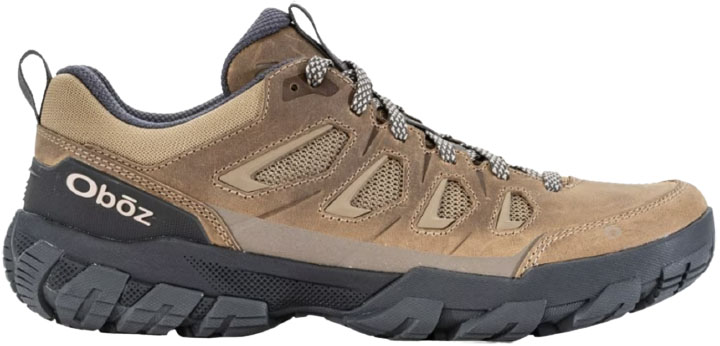 Category: Hiking shoe
Category: Hiking shoe
Weight: 1 lb. 15.6 oz.
Waterproof: No (waterproof available)
What we like: A modern update to a much-loved classic.
What we don’t: Pricier and less breathable than the Moab 3 above.
Based in Bozeman, Montana, Oboz has a reputation for making tough, comfort-first footwear for less than much of the competition. The Sawtooth has long been one of their most popular models for both day hiking and overnights, and this year it received a full overhaul with the latest “X.” Responding to the resounding movement toward lighter and nimbler footwear, the Sawtooth X features a modernized aesthetic and refined fit, along with added Cordura for abrasion resistance. But the original formula remains largely the same, including a roomy toe box and plush interior, Oboz’s supportive O Fit insole, and a tough construction that can handle mile after mile of trail abuse.
What’s not to like about the Sawtooth X? Despite Oboz’s efforts toward streamlining the design, it’s still a fairly heavy shoe and less agile than most. And with a leather upper and plush cushioning, its breathability suffers compared to the lighter, mesh-heavy hikers above. In looking at the Sawtooth X and Moab 3 side-by-side, the Merrell is $20 less and better-ventilated, while the Oboz is a bit lighter and offers more durability by way of Cordura in the upper. It’s also hard to find fault with the Sawtooth X’s fit, which is built to accommodate medium-to-high-volume feet and has a very minimal break-in period. And lastly, the Sawtooth X also comes in a low-top waterproof model ($165) and waterproof and non-waterproof versions of a mid-height boot.
See the Men's Oboz Sawtooth X Low See the Women's Oboz Sawtooth X Low
| Shoe | Price | Category | Weight | Waterproof | Upper |
|---|---|---|---|---|---|
| Salomon X Ultra 4 GTX | $160 | Hiking shoe | 1 lb. 11.5 oz. | Yes (Gore-Tex) | Synthetic |
| Merrell Moab 3 | $120 | Hiking shoe | 2 lb. 1.0 oz. | No (available) | Leather/mesh |
| Hoka Speedgoat 6 | $155 | Trail runner | 1 lb. 3.6 oz. | No (available) | Mesh |
| La Sportiva Spire GTX | $209 | Hiking shoe | 1 lb. 15.0 oz. | Yes (Gore-Tex) | Mesh |
| La Sportiva TX4 Evo | $169 | Approach shoe | 1 lb. 12.0 oz. | No | Leather |
| Altra Lone Peak 8 | $140 | Trail runner | 1 lb. 5.4 oz. | No (available) | Ripstop Mesh |
| Danner Trail 2650 | $170 | Hiking shoe | 1 lb. 8.0 oz. | No (available) | Leather |
| Hoka Anacapa 2 Low GTX | $180 | Hiking shoe | 1 lb. 14.6 oz. | Yes (Gore-Tex) | Mesh |
| Adidas Terrex Swift R3 GTX | $160 | Hiking shoe | 1 lb. 11.9 oz. | Yes (Gore-Tex) | Synthetic |
| Brooks Cascadia 18 | $140 | Trail runner | 1 lb. 6.2 oz. | No (available) | Mesh |
| Merrell Moab Speed 2 Low | $140 | Hiking shoe | 1 lb. 8.0 oz. | No (available) | Mesh |
| Scarpa Rush 2 GTX | $199 | Hiking shoe | 1 lb. 10.8 oz. | Yes (Gore-Tex) | Mesh |
| Adidas Terrex AX4 | $100 | Hiking shoe | 1 lb. 10.2 oz. | No (available) | Mesh |
| Keen Targhee IV Vent | $150 | Hiking shoe | 2 lb. 2.2 oz. | No (available) | Leather |
| Oboz Sawtooth X Low | $140 | Hiking shoe | 1 lb. 15.6 oz. | No (available) | Leather/Cordura |
The Switchback Travel team is no stranger to long days on the trail. From epic high routes traversing striking peaks to months-long thru-hikes across the country, we clock serious miles each year on all sorts of terrain. Former editor-in-chief John Ellings drew from his experience on local trails in the Pacific Northwest and far-flung expeditions to southern Patagonia (and beyond) to whip up our initial selection of 12 hiking shoes back in 2015. Senior editor Chris Carter took over the guide in 2024. A seasoned thru-hiker, Chris has completed the Triple Crown of long trails in the U.S. (AT, PCT, and CDT) and continues to backpack and explore around the world. He's worn well-earned holes in more hiking shoes than he can count and knows the importance of solid kicks for tackling any trail.
We meticulously tested countless highly rated hiking shoes to narrow in on the selection of 15 models above, drawing from personal experiences as well as feedback from seasoned contributors and the hiking community as a whole. Weight, durability, breathability, and cushioning are all key factors we consider when gauging the mettle of a hiking shoe, and each design had to prove itself over grueling miles to earn a spot in this round-up. Finally, we know the hiking shoe market is constantly evolving. As a result, we keep our finger on the pulse of new products when they surface, adding standouts to our list along the way and ensuring our existing reviews stay up-to-date. And if you're looking for a different style of hiking footwear, we took a similar approach in putting together our lists of the best hiking boots and best trail running shoes.
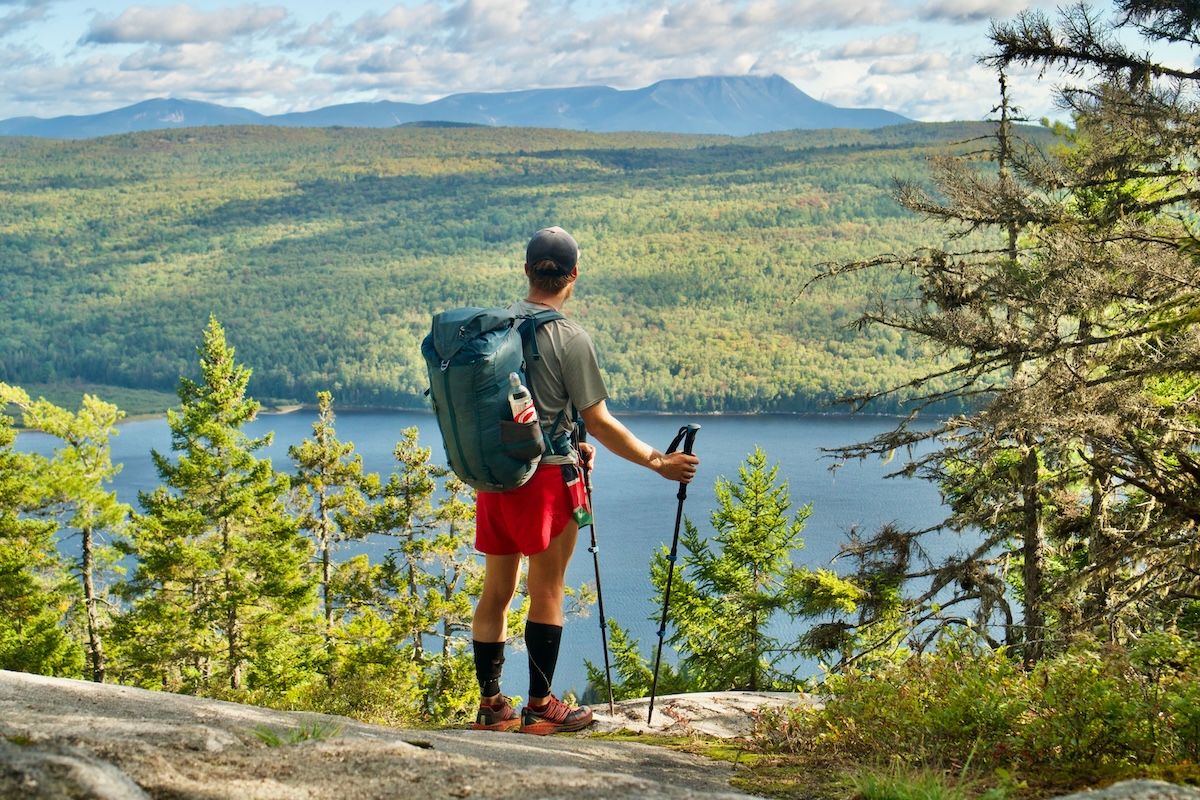
Hiking Shoes
For the vast majority of day hikers, and even a good number of backpackers and thru-hikers, a hiking shoe that falls just below the ankle is the perfect match. Shoes like our top-rated Salomon X Ultra 4 GTX are stiffer and more substantial than a trail runner for carrying a light load over mixed terrain but don't feel draggingly heavy like a full-on boot. Furthermore, hiking shoes often have a tougher construction than trail runners, with increased use of leather and durable nylons as opposed to mesh. Protection from obstacles like rocks and roots comes courtesy of rubber toe caps and medium-stiff midsoles. Hiking shoes are also great options for folks needing a substantial shoe for daily wear—just be mindful that the outsoles will wear faster on pavement.
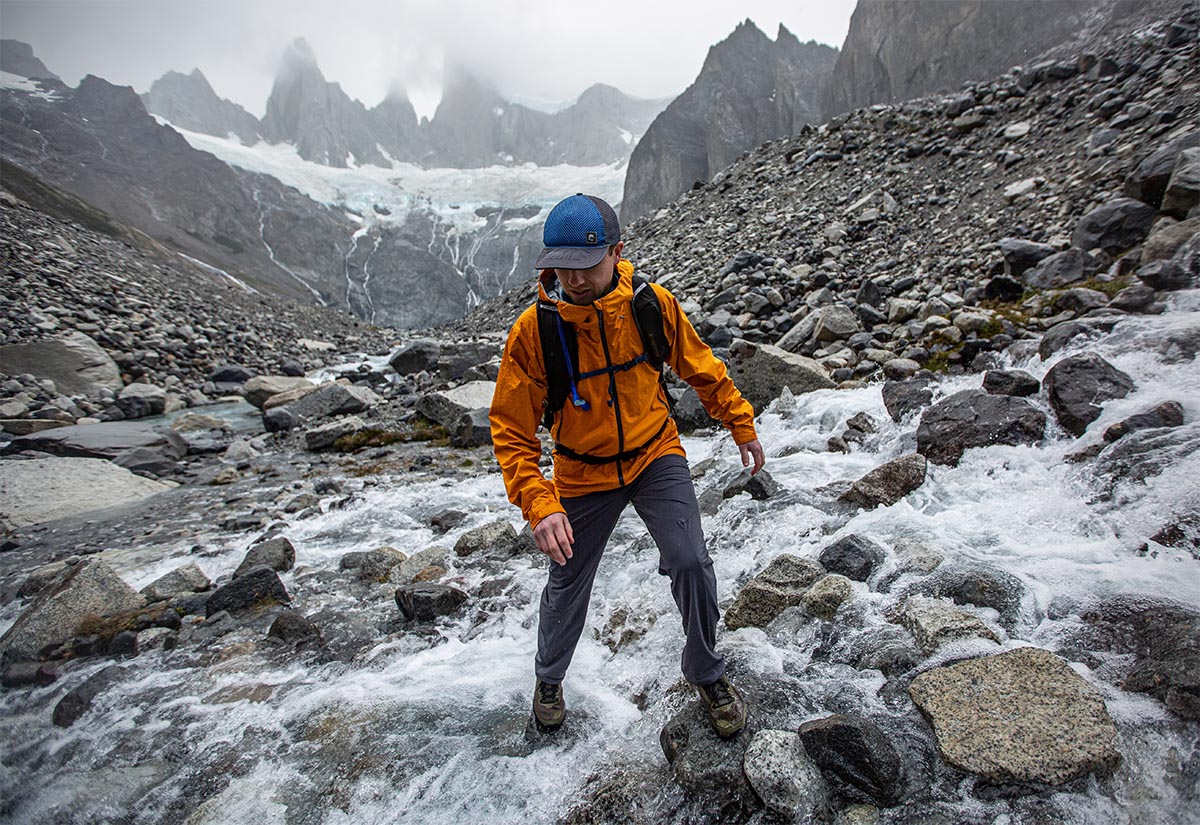
Trail Running Shoes
If moving fast trumps all else, you should consider a trail runner. Shoes like the Altra Lone Peak and Hoka Speedgoat have gained significant popularity over the past few years for being the ultimate lightweight option and are a common sight on thru-hikes like the PCT and AT. That said, keep in mind that these types of shoes are not traditional off-trail or backpacking footwear. Trail runners are flexible and super comfortable, but they don’t provide much in the way of ankle support when you’re carrying a heavy load and generally have minimal toe and underfoot protection. For hikes on established trails or for experienced minimalist trekkers, however, a trail runner remains an excellent option. We’ve included a couple great hybrid trail running and hiking options in this article, but for a complete breakdown, see our round-up of the best trail running shoes. And for a deeper dive into the differences, check out our article on Hiking Shoes vs. Trail Runners.

Approach Shoes
The third option has a relatively narrow focus: climbers or hikers who need a grippy shoe to tackle steep and rocky terrain. Many rock climbers will use an approach shoe on the hike in (hence the “approach” in the name) and swap out to a true climbing shoe when the going gets vertical. Approach shoes are easy to spot: They have a large toe rand and a sticky, low-profile rubber compound underfoot for maximum grip on rock. The shoes can be plenty comfortable on day hikes, especially a crossover style like the La Sportiva TX4 Evo, but aren’t what we typically recommend as a daily driver or backpacking pick—though one of our editors does know someone who hiked the entire AT in TX4s. The tread isn't as secure on soft surfaces like mud, and approach shoes generally aren't as comfortable underfoot for long trail days. If, however, your day hikes include a lot of scrambling or low-grade rock climbing, an approach shoe is an excellent choice.

Arguably, the most important change in modern hiking shoe technology is the movement to lightweight designs. Tough but thin fabrics and a shift from over-the-ankle boots to low-top shoes have made putting on major miles a lot easier. It’s no surprise most thru-hikers now choose a hiking shoe over a traditional leather boot. Most of the shoes on our list weigh 2 pounds or less for a pair—by comparison, a backpacking boot like the Asolo TPS 520 GV Evo tips the scales at around 4 pounds. And on your feet, the weight is even more apparent. True, the drop in ounces sometimes impacts long-term durability, but there are still a number of compelling hiking boots for traditionalists and those needing the extra support. For most, a lightweight shoe is a much better partner for day hikes, peak bagging, and minimalist overnights. As long as the rest of your gear is equally light, there are very few sacrifices.
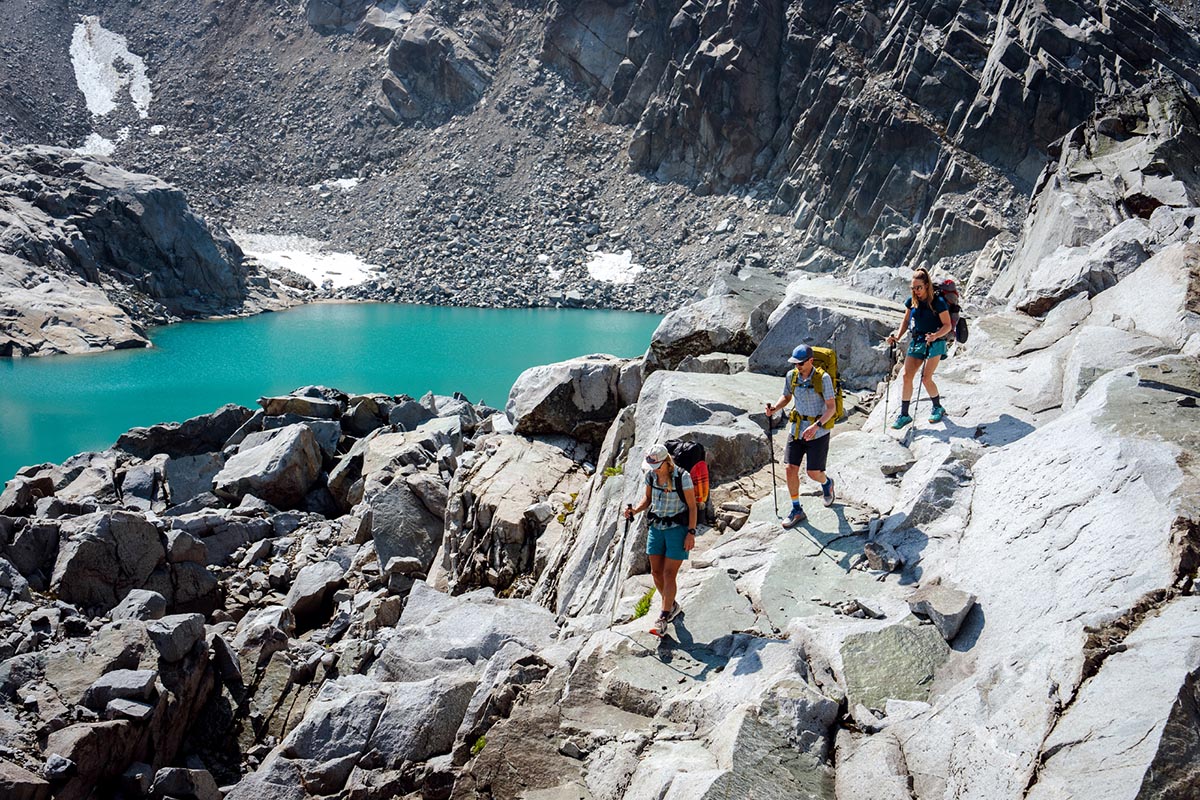
As a reflection of the push for lighter gear in all facets, hiking shoes are moving away from the traditional stiff construction of a hiking boot in favor of flexibility and a nimble feel. All hiking footwear (excluding some minimalist trail runners) does retain a degree of stiffness thanks to built-in shanks or internal supports. These features are part of what separates a hiking shoe (and approach shoe) from a super flexible cross trainer or road running shoe.
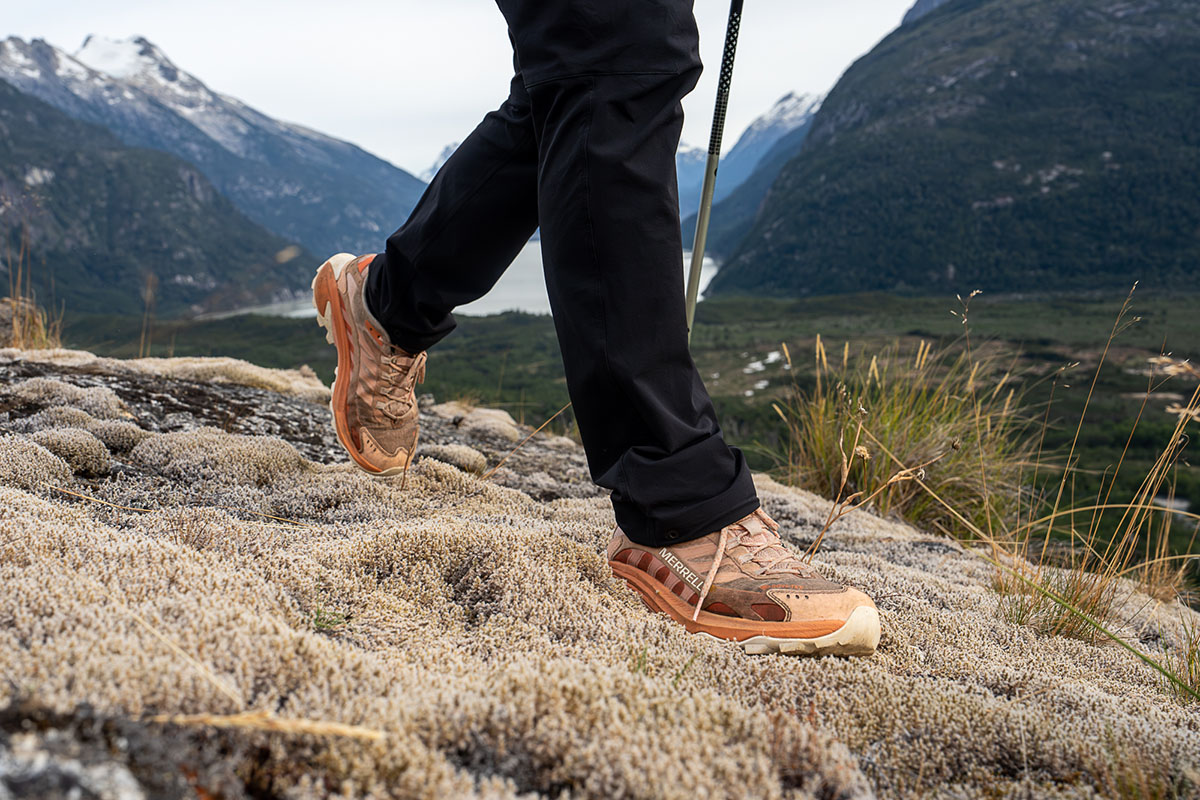
For day hikes on flatter or less technical terrain, we can’t recommend a lightweight and semi-flexible hiking shoe enough. Shoes like the Merrell Moab 3 and Keen Targhee IV Vent are standouts for these uses. As your trips get longer and your pack gets heavier, a more substantial shoe still wins out for us. Look to the Salomon X Ultra 4 and Adidas Terrex Swift R3 for great all-around options that are equally adept at conquering summit peaks and multi-day backpacking.
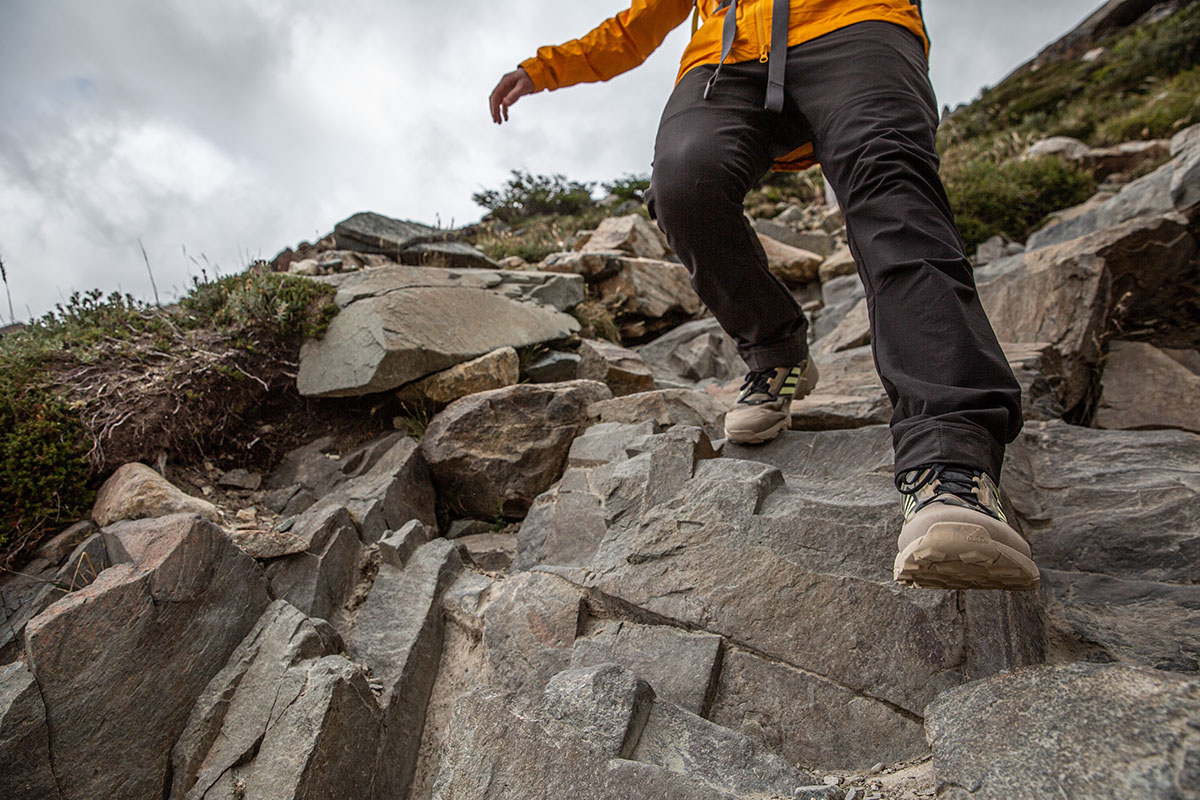
Once you narrow your hiking footwear search, you may be considering the GTX question: Do you need waterproofing or not? In theory, waterproofing is a nice security blanket if you’ll be hiking in the mountains. The extra protection that comes with a waterproof and breathable membrane inserted into the shoe is great for creek crossings, surprise rainfall, or if you hit snow on an early-season trek. But the extra layer adds weight, impacts breathability pretty significantly (discussed below), and the designs aren’t always perfect. We’ve found Gore-Tex models to work consistently well, and many in-house designs perform similarly at keeping water out (breathability is a different story), including the Oboz Sawtooth's B-Dry technology.
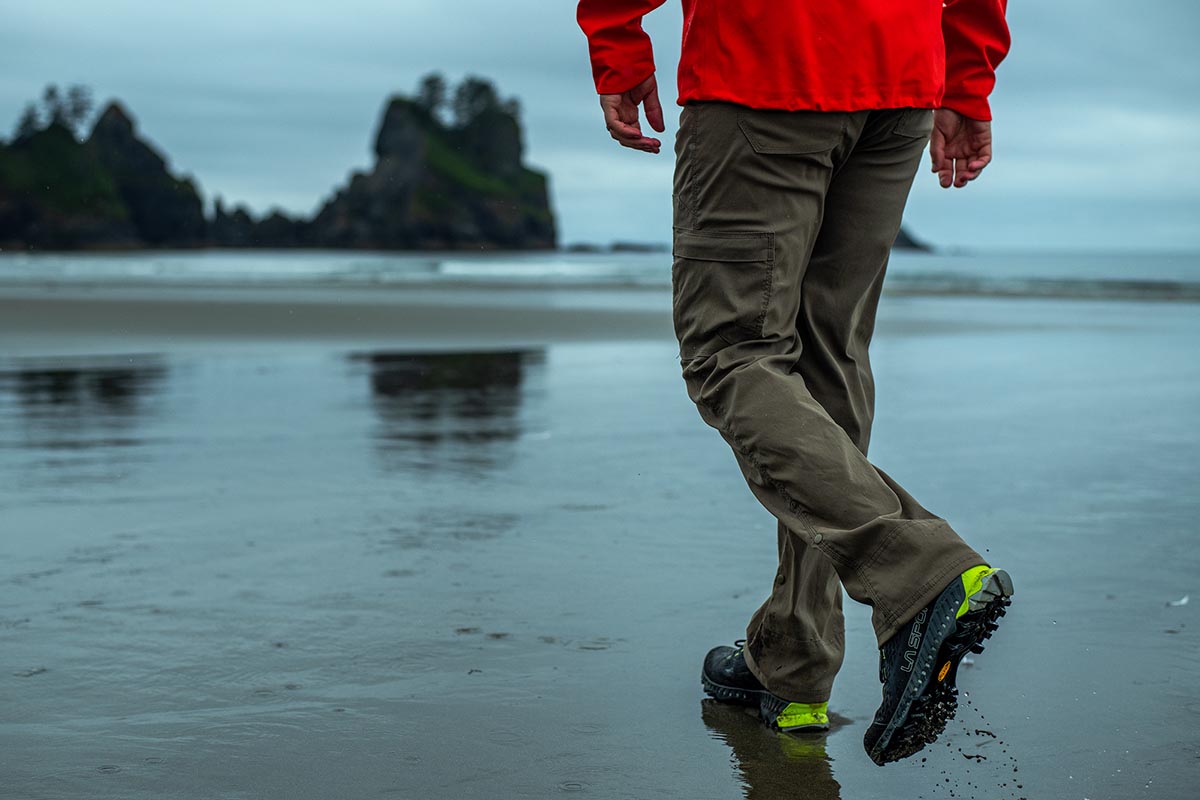
Whether or not you need waterproofing often comes down to a personal choice. Are you a summer-only hiker or live in a warm and dry area? We’d recommend a non-waterproof shoe in most cases, and some of the best-ventilating shoes are the Altra Lone Peak 8 and Merrell Moab 3. But if you get into the alpine regions or would benefit from the added protection and modest insulation waterproofing provides, we’d lean the other way. The great news is that most shoes on our list are offered in both varieties. Expect to pay about $20 to $30 more for the addition of waterproofing.
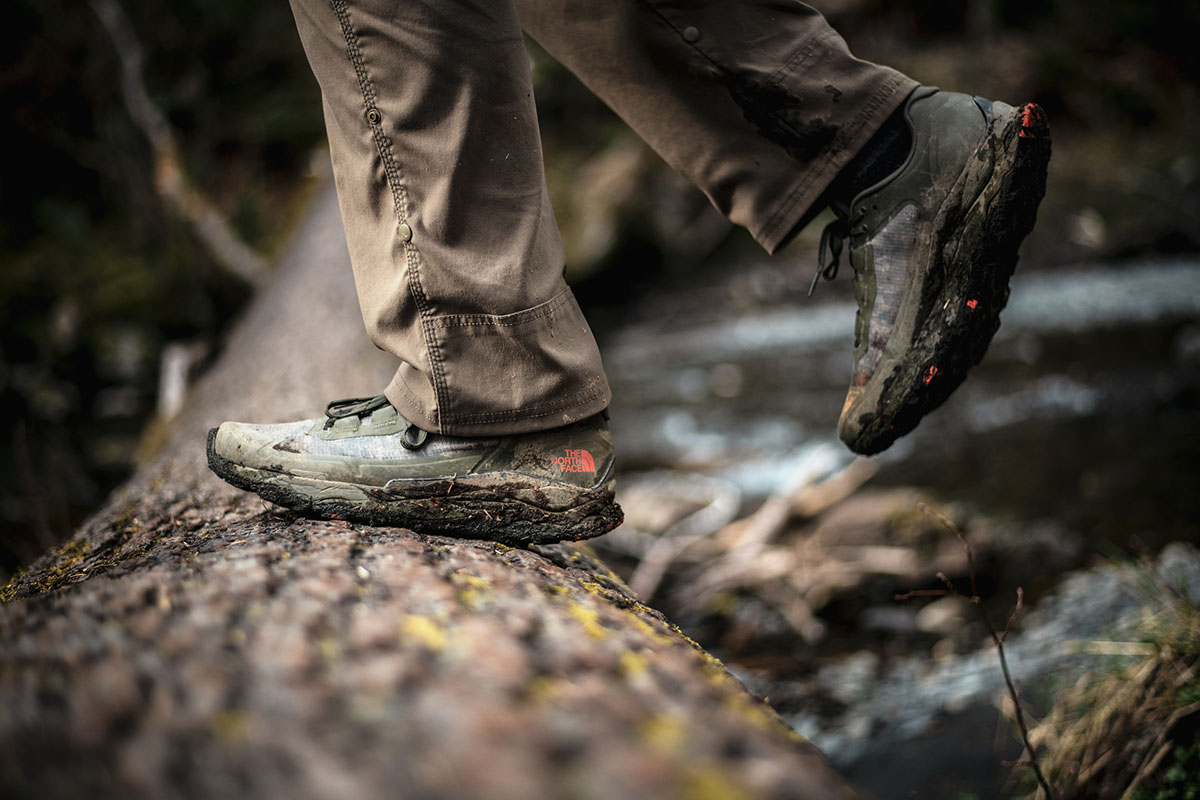
The truth about waterproof liners, even expensive Gore-Tex booties, is that they don’t breathe well—just as a waterproof jacket won’t be as breathable as a comparable non-waterproof version. Simply put, waterproof and breathable membranes restrict a shoe’s ability to pull moisture away from your sweaty feet as efficiently as a non-waterproof upper. Not all non-waterproof shoes should be treated equally, however. Footwear that features thinner fabrics and a lot of mesh will increase moisture transfer and airflow, which will keep feet less sweaty in hot weather as well as dry out soggy hiking socks far more quickly.

Gore-Tex Surround, which is designed to bring 360 degrees of breathability by venting out the insole of the shoe, is an intriguing—if expensive—concept. It’s been well received in a few models, including the La Sportiva Spire, but performance will always fall short of a shoe made mostly of mesh (for more, see our in-depth Spire review). No matter your final decision, we encourage you to at least give non-waterproof footwear a thought before selecting your next pair of hiking shoes.
Easily overlooked, laces—as well as the system of hooks and eyelets—play an essential role in fit and comfort. If a shoe has a poor lacing system that is prone to loosening, you’ll find yourself having to readjust constantly on the trail. If the system itself doesn’t secure your heel very well, the up and down walking motion will create hot spots and blisters. If the culprit is just the laces themselves, it’s an easy fix: There are a number of quality replacement laces available. But if the system doesn’t hold your foot very well, we recommend looking elsewhere.

Some models, including the Salomon X Ultra 4, have a single-pull lacing system. The design is highly convenient, and we’ve had no more issues with durability than we've experienced with traditional laces. One thing to keep in mind, however, is that you aren’t able to adjust the fit between eyelets, so the shoe will be equally tight across the entire foot. Those with finicky feet that need to fine-tune their laces to be comfortable may be best served by avoiding quick-lace designs.
.jpg)
Hiking shoe upper material is not the most exciting topic, but checking the construction can give helpful insights into a shoe's performance. The type of material used will correlate directly with a shoe's durability, water resistance, and ability to breathe. Most often, hiking and trail shoes are made with a mix of nylon, mesh, and leather to balance cost and longevity. Below, we spell out the pros and cons for the most common materials used for hiking footwear.
Synthetic Nylon and Mesh
Woven synthetic (often nylon) as well as open synthetic mesh panels are commonly used to aid breathability. These materials are not as well known for their durability, but they do a great job of cutting weight. Some of our favorite models with durable but lightweight synthetic mesh for standout breathability include Hoka's Speedgoat 6 and Altra's Lone Peak 8—both of which have accompanied us on multiple months-long thru-hikes and international backpacking trips.

Nubuck Leather
Made of full-grain leather, but given a brushed finish that has a suede-like feel, nubuck leather is a common sight on heavier-duty hiking shoes. The softer-touch leather is lighter and more flexible than traditional, glossy full-leather options and more durable than most nylons. It does fall short in breathability, however. As a result, it’s common to find a mix of leather and nylon mesh for abrasion resistance and breathability, as seen on shoes like the Merrell Moab and Keen Targhee Vent. Hoka's Anacapa 2 Low GTX also features a recycled mesh upper crisscrossed with nubuck leather overlays, which boosts durability while still affording decent breathability—a tricky balance for waterproof shoes.
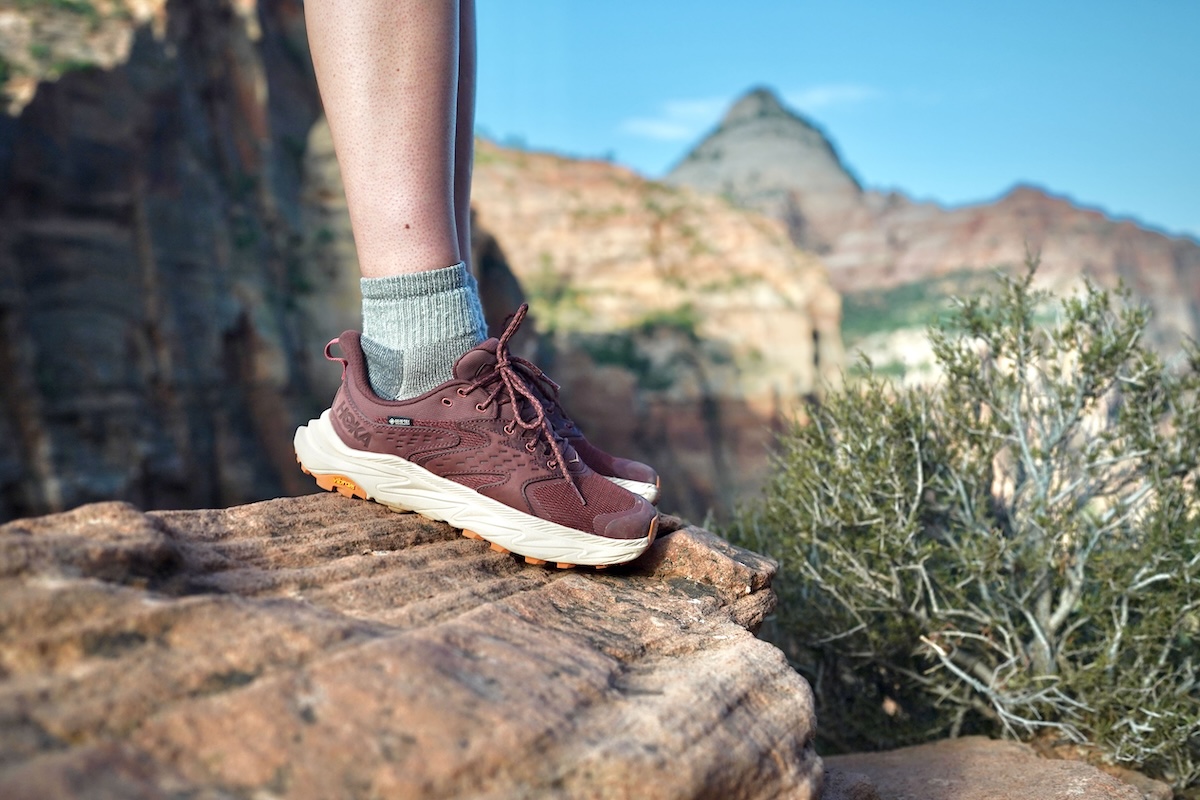
Digging a little deeper into the shoe's construction, we'll look at midsole construction next. Its importance lies in cushioning your feet, working as a shock absorber from impacts, and providing an additional layer of protection from sharp rocks. Depending on the design, midsoles vary from very thin (minimalist trail runner) to stiff and substantial (burly hiking shoe). Most include EVA, TPU, or a combination of both in their construction.
EVA
Foam EVA midsoles are a common site on running and hiking footwear. The cushy soft material takes some of the sting out of your heel or midfoot impacts and is also extremely lightweight. While nearly all shoes on this list use some sort of EVA, the proprietary versions can vary from super soft to mildly stiff. For logging serious miles on tougher terrain, we prefer a firm and supportive midsole as opposed to too much cushioning. Those overly soft midsoles also have a tendency to break down overtime, much like a road-running shoe. In general, you pay more for an improved midsole design and a higher-quality EVA compound.

TPU
Thermoplastic polyurethane, (mercifully) shortened to TPU, is a durable plastic commonly found in performance-oriented light hikers. Shoes that use TPU underfoot are often less cushy than those with only EVA but will last longer and better handle a heavier load. In addition, they’ll keep their shape longer and won’t be prone to compressing like EVA. Because both midsole types have valid applications and TPU is more expensive, it’s common for a manufacturer to use a TPU frame or shank for stability and toughness and add in EVA underfoot to increase comfort.
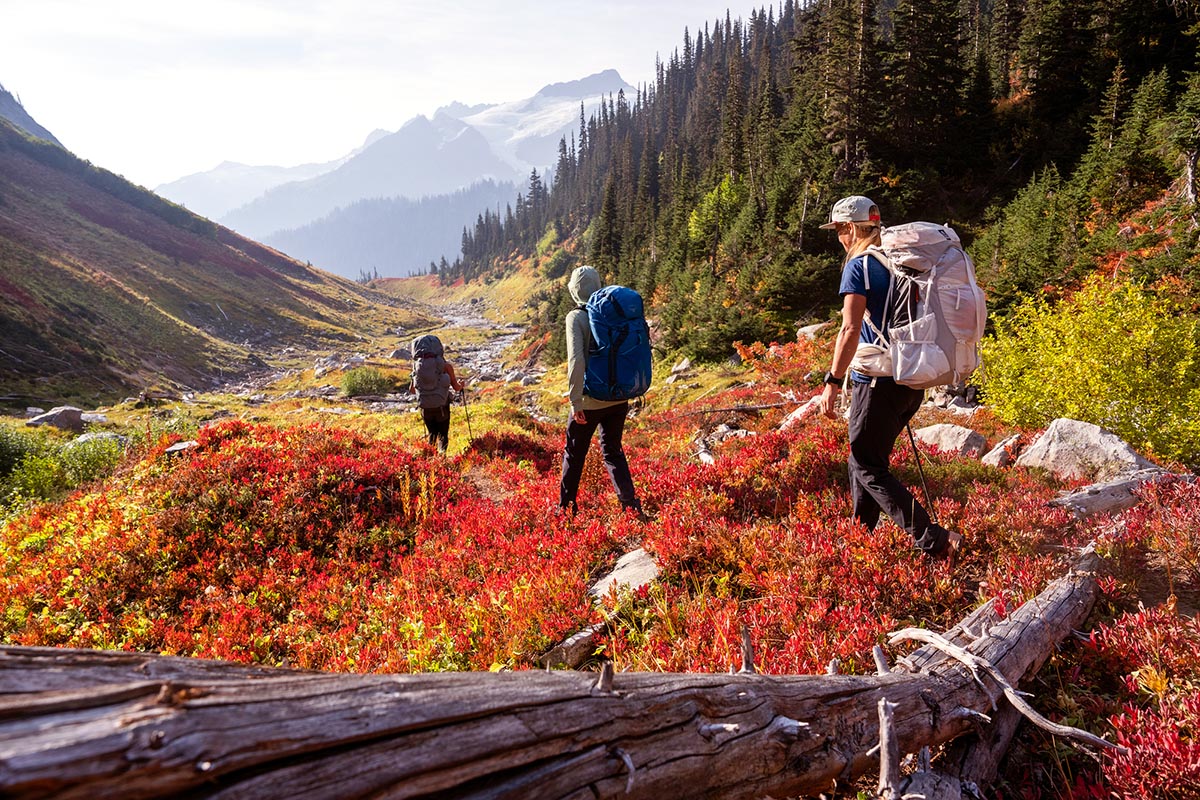
One of the main reasons to upgrade from a flimsy cross trainer to a true hiking shoe is for improved traction. In a way that more casual footwear can never match, hiking and trail running footwear is leaps and bounds better when the going gets rocky, slippery, and steep. And much in the same way that Gore-Tex dominates the market for mid to high-end waterproofing, Vibram inhabits a similar space for outsoles. Their name is synonymous with solid grip and traction on a variety of terrain, and Vibram rubber is incredibly durable compared to other compounds we've tested. Not all Vibram models should be treated as equals, however, as the rubber manufacturer tailors their designs for the specific footwear and brand. Some have much larger lugs underfoot for serious grip in mud, and others prioritize sticky rubber for scrambling over rocks. There are also more entry-level options that just do well on easier trails, like the lugs you’ll find on the bottom of the Merrell Moab 3 boots and shoes.

Salomon is one brand that doesn’t outsource their traction needs. Instead, they use their in-house Contagrip compound for all of their hiking and trail running models. We’ve found the level of quality and performance is in line with Vibram offerings across the board, from their fast-and-light X Ultra 4 hiking shoes to the burly Quest 4 backpacking boots.
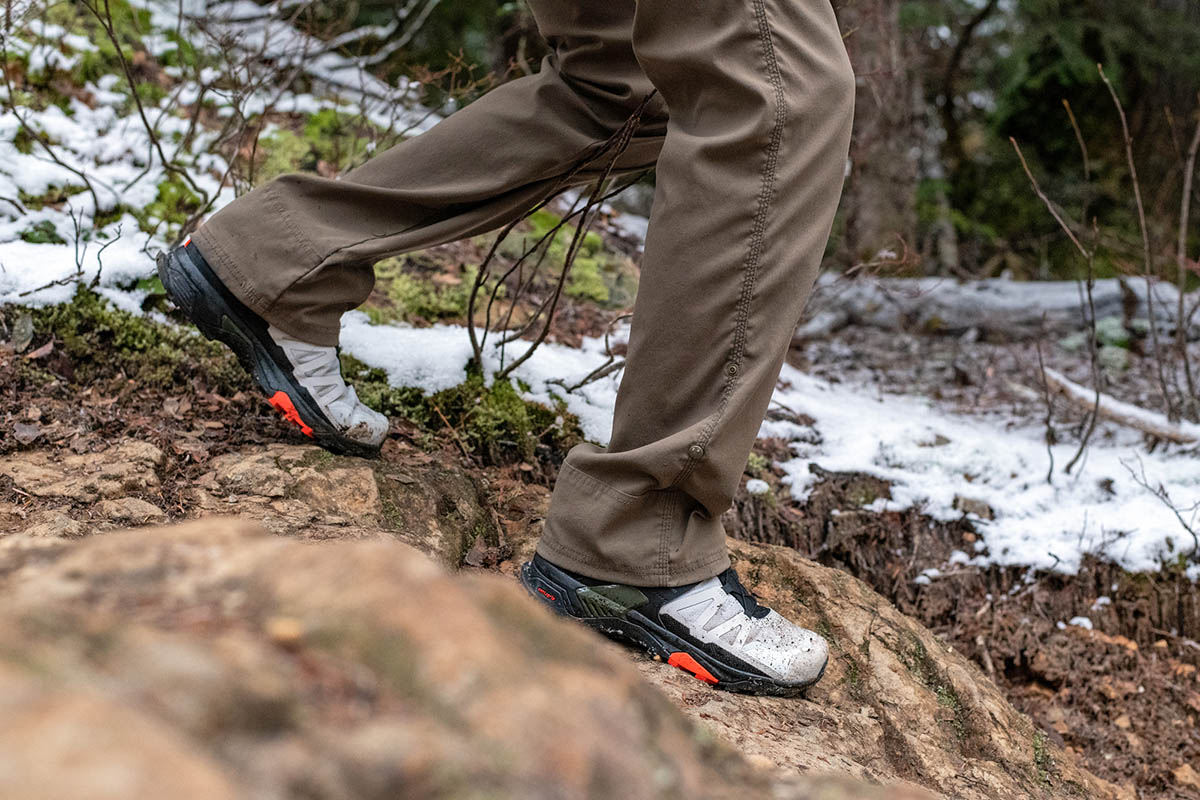
Hiking trails, even well-maintained ones, are full of rocks, roots and other potential hazards, so we almost always recommend a hiking shoe with some type of toe cap. Lacking any protection on the front of your shoes can lead to a trip ruining impact when you inevitably look up from the trail to enjoy the scenery. Hiking shoes typically have a full rubber toe cap, but trail runners sometimes have a trimmed down version or none at all—one of the compromises in opting for a minimalist shoe. Approach shoes, on the other hand, have exceptional toe protection with their wraparound rubber rand at the front of the shoe.
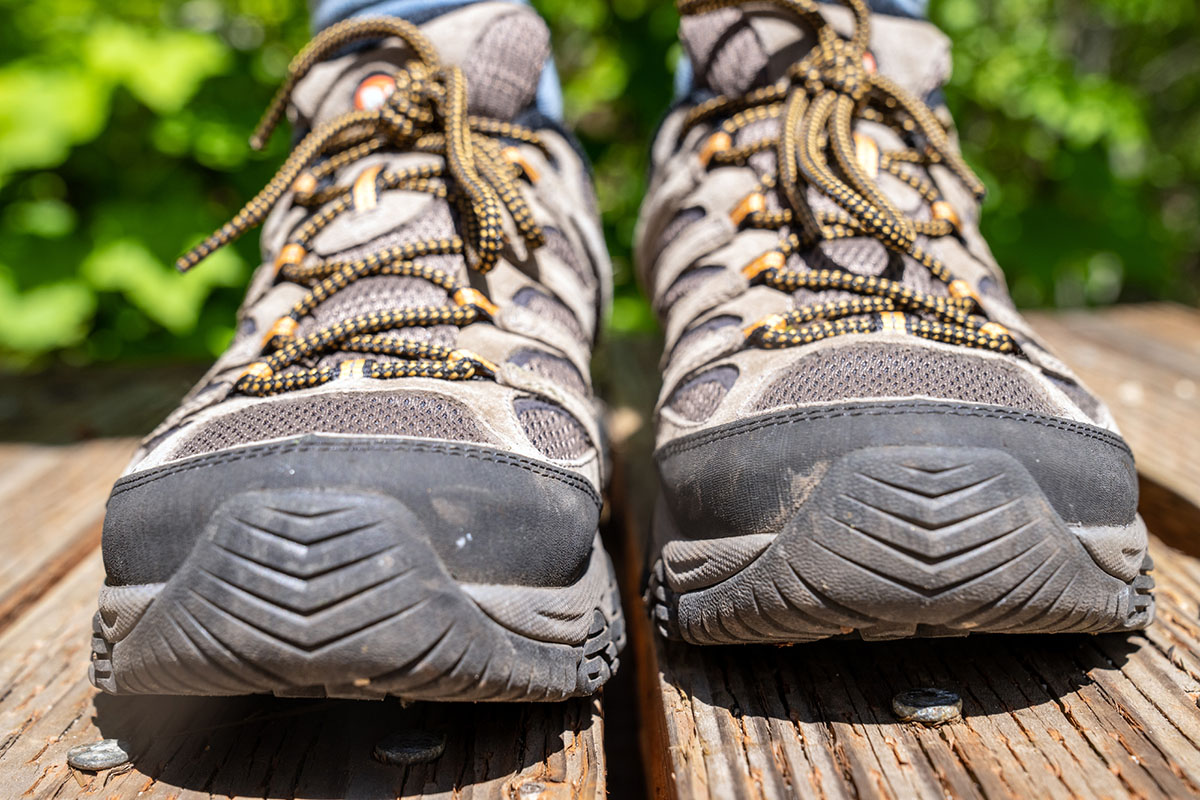
Just like with running shoes, the stock insoles that come with nearly every hiking shoe generally are cheap. For some, this might not make a difference, but for others, it’s what separates comfort from misery. Thankfully, removing your insoles is super easy, and replacing them with an aftermarket model that’s specific to your foot size and shape can remedy most shoe maladies. New insoles can provide more or less volume to fill out the shoe, improve fit under the arch, and increase or decrease cushion and shock absorption. We recommend checking out Superfeet insoles for their wide selection of options and trusted reputation in daily shoes, ski boots, and hiking footwear as a whole.
Perhaps the biggest point of differentiation between hiking shoes and boots is height: Shoes have a low-top fit, while boots generally sit above the ankle. Hiking shoes excel on smooth trails where rolled ankles are less of a possibility (if you keep your pack weight down) and for those who want to move fast with less on their feet. Tradition tells us that hiking boots are the better choice for heavy packs and rough trails, and in most cases, that still holds true today. The tall height, along with laces that hold the boot snugly around your ankle, offers a more secure fit, greater stability, and added protection. That said, with enough practice and trail time, hikers can build up ankle strength in low-top shoes and remain quite safe traversing the same terrain that they would in boots. Given the choice, we most often select a hiking shoe for its lightweight and agile feel, but both are viable options for day hiking, backpacking, and non-alpine peak-bagging.

In 2025 and beyond, we see the lines between hiking shoe and boot categories continuing to blur. They still will be separated by height—although some modern boots only cover part of the ankle—but fewer and fewer boots resemble the heavyweight leather clunkers of old. One example is the over-the-ankle version of our top-rated Salomon X Ultra 4. It’s the exact same shoe with the same defining characteristics—feathery feel, aggressive stance, and supportive fit—but the “Mid” sits slightly higher on the ankle, weighs a couple more ounces, and provides a boost in protection and support. Since most folks stick to defined trails, the push for this type of fast-and-light footwear will continue to take over the market.
Back to Our Top Hiking Shoe Picks Back to Our Hiking Shoe Comparison Table